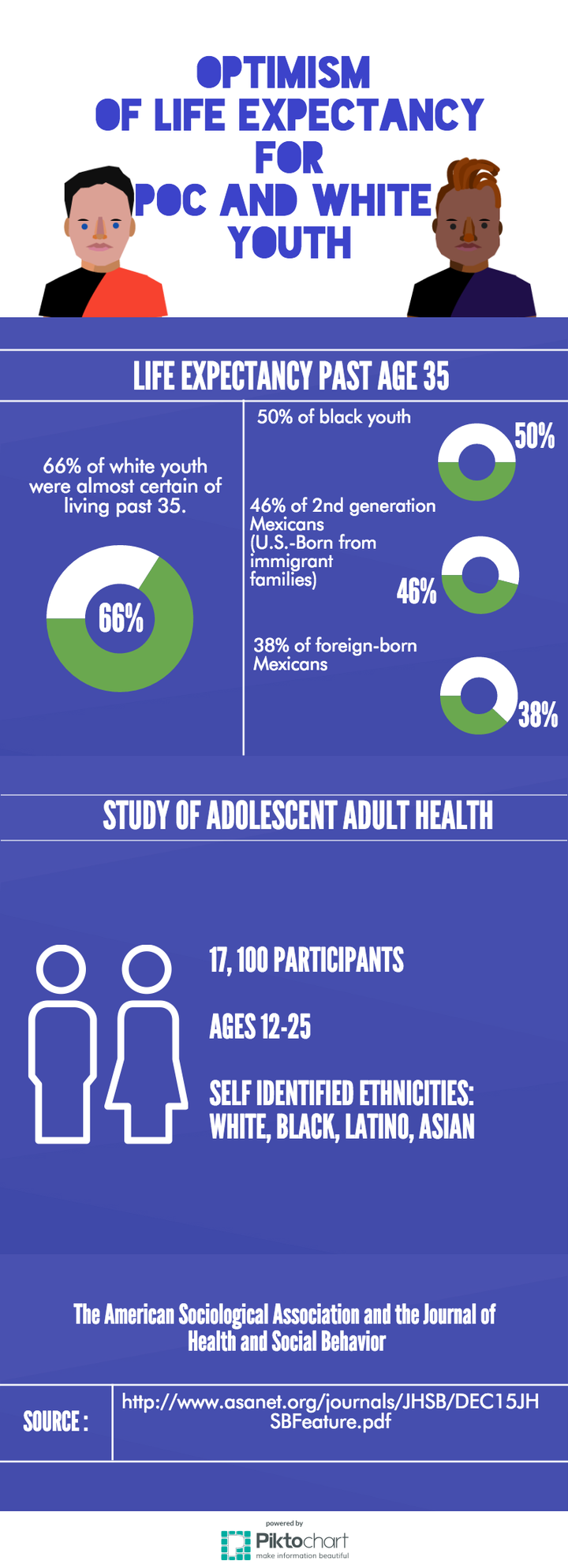The average life expectancy of Americans is about 79 years old, but many young people of color who live in the U.S. aren't certain they'll live past 35.
On Monday, the American Sociological Association and the Journal of Health and Social Behavior released a report on the optimism of life expectancy for young people, for which white and minority youths answered questions about their life expectancy including whether they thought they would live past the age of 35. The findings from the report show that young whites, at a rate of 66 percent, are usually more optimistic than minority peers about the likelihood of living past 35.
The results are surprisingly devastating for the youth of color. Just 50 percent of black youth felt confident that they would live to be 35. Only 46 percent of U.S-born children of Mexican immigrants aged 12 to 25 feel that they will live beyond the young age of 35, and 38 percent of Mexican-born immigrants believe they will live through 35.
Researchers surveyed more than 17,000 adolescents, male and female, to get their opinions on their own life expectancy. According to Tara D. Warner, the corresponding author for the study, 57 percent of respondents were white and 23 percent black. The remaining the 20 percent were a combination of Latino and Asian ethnicities varying in country of origin and migrant status.
The Huffington Post collected the report data in an infographic below breaking down the statistics of young people's optimism for life expectancy by race and ethnicity.

According to Warner, the survey has been conducted since 1994 and is "the first to look at the survival expectations differently by race, ethnicity, and nativity," she told HuffPost.
The data from the report points to a variety of factors that could influence the high pessimism of black communities such as experiences of police brutality or a greater likelihood of a living in dangerous neighborhoods. Also, the rates for foreign-born and Mexican-American citizens may be higher due to attitudes of xenophobia and for some the threat of deportation.
"In terms of our explanation for the pessimistic attitudes of particular groups... We're attributing this to structural disadvantages, exposure to neighborhood poverty and family poverty, exposure to violence," Warner said. "We also discuss in the paper experiences with the criminal justice system, experiences or expectations with police violence."
The report is both upsetting and timely in light of recent incidents of black men, women, and children being threatened or killed in racially motivated mass shootings or police violence. The findings from the survey show that why it is essential to emphasize that black lives matter, so that young people of color do not fear for their own to a greater degree than their white peers.
The full report is available at the American Sociological Association's website.
Also on HuffPost:

